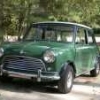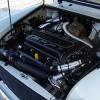Ball Joints
#1

Posted 11 August 2008 - 01:26 PM
I have made a post a few months ago regarding this but....
How do you achive the same results when you have to torque up to 75lb when if you look through the haynes how the bloody hell do they achievee accurate torque figures with that spanner they use I have to be honest here I have done ball joints before and have done them up with a big set of plyers and have had no probmens after all they have the side clamps and the nut is this so dangerous that on my last post i was shot down ?
This is the fina ljob that is stopping this mini going back on the road so any help would be greatfullyyyyyyyyyyy appreciated.
Kind regards
Brad
#2

Posted 11 August 2008 - 01:30 PM
I generally rebuild my hubs once a year but touch wood I've never had a failure and there's never been play in any of the four ball joints upon stripdown after a years use.
However thats just the way I do it - its probably completely different to other people and I'll likely get told off! Its up to you to decide how's best to do it.
#3

Posted 11 August 2008 - 01:38 PM
Thanks for your reply.
I do have a torque wrench and I also have the correct socket but find it ny on impossible to get the correct out come I have done like you do in the past and have like you no problems but I was catagricaly adviced this is incorrect.
any one else back up this theroy seeing as this a mini fourum we must be able to get a general out come as even if you look in the manual it doesnt show the chap torquing up.....
Brad
#4

Posted 11 August 2008 - 02:09 PM
#5

Posted 11 August 2008 - 02:44 PM
I've never torqued one - just banged 'em up tight.
#6

Posted 11 August 2008 - 03:09 PM
Yes, the lock-tab would keep the joint from falling apart (immediately). However, by the time the dome nut works loose just a fraction (until the lock tab catches it), the clearance in the joint would become measurable. Once there is play in the joint, the components will start moving back and forth with increasing amounts of motion. In the end, something will fail.
Airing some corporate dirty-laundry... three years ago our firm ran into a quality issue where some assembly personnel neglected to apply Loctite to some of our critical fasteners. The bolts were "tight" but not torqued properly either. After a few months of operation the installed tooling worked loose and we spent weeks in the field disassembling and reassembling our tooling to correct the manufacturing error. What we learned from this is that the applied torque AND the retaining method are both important for success, particularly in joints subject to cyclic loading.
#7

Posted 11 August 2008 - 05:49 PM
The shims do not compress, so as long as: The dome nut is well tight.
I don't think you fully understand what is going on when you torque a nut. You aren't trying to compress anything, quite the opposite in fact. Measuring the torque reaction generated in turning a nut is simply a method of measuring how much the fastener has stretched. It take a certain amount of force to stretch steel by a certain amount and knowing the force generated and the thread pitch allows you to work out how far the metal has stretched into place. Torqueing is not as accurate as angle gauging but in reality you are still measuring the same thing. A nut is only 'tight', as in tight enough that it won't move anywhere when the threads are exerting a certain force against each other and this force is generated by stretching the steel into place. The thread in question here is large, that means there is a lot of surface area in engagement in the threads and so a lot of torque is generated when developing the correct stretch. Because of this stretch being loaded onto the metal the clearances will change as the nut is torqued up and so if you don't apply the same amount of stretch twice (as is when you measure for shims and again when you finally build) the shim pack you select won't always be right in the final assembly. The ONLY way to get the same result twice is to measure how far you are stretching the metal. You can do this with a stretch gauge, with an angle gauge or with a torque wrench. Since Rover publish a torque figure for the nut and don't publish an angle the torque wrench is the best option. You could look the angle up in engineering charts if you knew the thread size and materials involved but really a torque wrench is easier. With an extra deep 1 1/2" ball joint socket and a torque wrench this is simple.
#8

Posted 11 August 2008 - 07:08 PM
Edited by taffy1967, 12 August 2008 - 01:06 PM.
#9

Posted 11 August 2008 - 07:15 PM
if you look through the haynes how the bloody hell do they achievee accurate torque figures with that spanner they use
I' ll bet he has a calibrated elbow
#10

Posted 11 August 2008 - 08:19 PM
Again thanks for the brill responces and ill keep you all informed on how I get on tomorow
Kind Regards
Brad
1 user(s) are reading this topic
0 members, 1 guests, 0 anonymous users



















